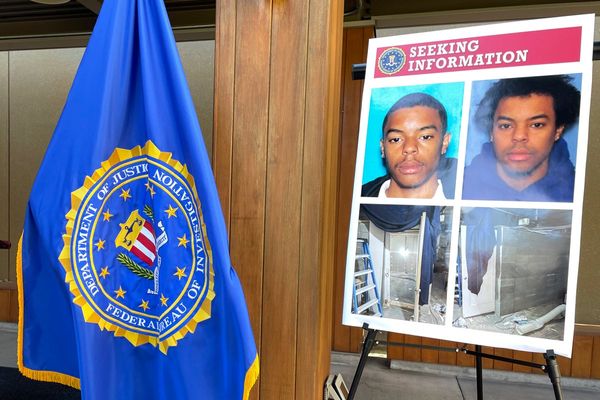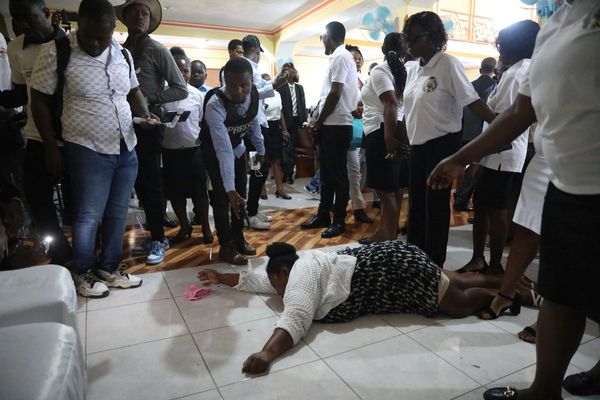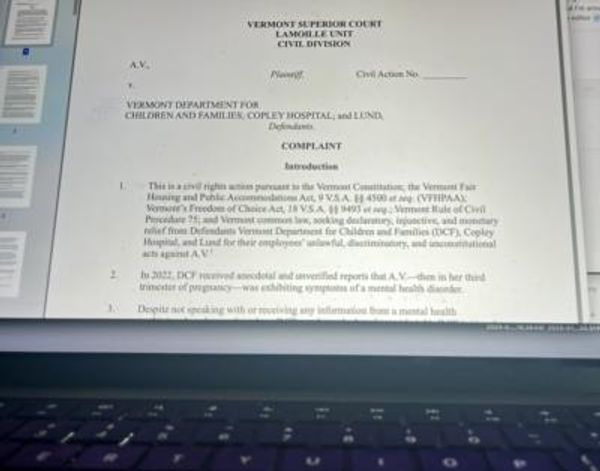
The father of a child who died after catching Strep A has said she might still be alive if she had been given antibiotics.
Hanna Roap, a seven-year-old girl from Wales, is one of six children to die in the last few weeks of a severe form of Strep A infection called invasive Group A Strep (iGAS).
Cases of the disease in primary-school-aged children are up four-fold compared with pre-pandemic levels and parents are being urged to keep an eye on their child in case they show symptoms of a Strep A infection.
Hanna was prescribed steroids after waking up coughing on the evening of November 25, but died less than 12 hours later.
“I took her home from the doctors and gave her the medication," said her father, Abul Roap, 37.
"She went to sleep at 4pm and never woke up. She stopped breathing at 8pm but we were not immediately aware because she was sleeping.
“I did CPR, I tried to revive her but it didn't work. Paramedics arrived and continued the CPR but it was too late.
“She did not get the right medication, if she had been given antibiotics it could have been potentially a different story.”
Muhammad Ibrahim Ali, a four-year-old boy from High Wycombe, was given antibiotics for Strep A but died at his home later that day after suffering a cardiac arrest.
Muhammad’s family told their local press that he was rushed to the doctors after developing a rash, and given antibiotics but died that evening. His family were told Muhammed had had iGAS in his bloodstream for a month.

Data show iGAS rates have soared to a level more than four times higher than they were before the Covid pandemic, with more child deaths already this winter than in a normal year.
Strep A infection is common and mostly leads to tonsillitis or strep throat and is easily treatable with antibiotics, namely penicillin in the UK.
But doctors are under increasing pressure to cut down on the amount of antibiotics they prescribe as a result of the rise of superbugs – bacteria that are resistant to antibiotics.
Superbugs are predicted to kill 10 million people a year by 2050, with experts saying this "silent pandemic” is humanity's gravest threat.
The UK health authorities have previously trialled paying healthcare providers to cut down on their antibiotic prescription levels and set a target of slashing prescription by 15 per cent.
The British Medical Association pushed back against plans to let pharmacists prescribe antibiotics as “antibiotics are a precious resource and should be prescribed only when absolutely necessary”.
But while antibiotics are overprescribed by around 40 per cent, and often given for colds caused by viruses which are impervious to the drugs, there are no tests available to GPs to tell whether a sick child has a bacterial or a viral infection.
As a result, doctors are tasked with cutting down on giving out antibiotics without really knowing which patients need them and which ones do not.
'Slightly mad' that doctors have to use guesswork
“The price of an antibiotic currently is always cheaper than the price of a diagnostic,” says Jim O’Neil, the economist behind the seminal 2016 review of antimicrobial resistance commissioned by then prime minister David Cameron.
“It seems to me slightly mad, as brilliant as doctors are, that they guess whether somebody wants an antibiotic in the first place, and then what kind of antibiotic,” Lord O’Neill said.
But now, while progress has been made in reducing antibiotic prescriptions, a bacterial infection which is easily treatable has killed six children who may have survived if given antibiotics earlier.
Strep A is a bacteria sometimes found in the throat or on the skin and caught through close contact and from coughing and sneezing and normally leads to Strep throat.
In severe cases it can lead to iGAS if it gets into the bloodstream via cracks in the skin or if a child has a weakened immune system. iGAS can lead to sepsis or shock and, in extremely rare cases, meningitis, and can rapidly kill a patient.
Data from the UK Health Security Agency (UKHSA) shows that in pre-pandemic times for children aged between one and four years old there were 0.5 cases of iGAS per 100,000. However, the current figure is 2.3 per 100,000.
For children aged between five and nine years old it has more than tripled, up from 0.3 per 100,000 to 1.1 per 100,000.
Cases of scarlet fever, which is a different disease but caused by the same bacteria, have also increased in recent months.
Official data show that in the most recent week there were 851 cases of scarlet fever, more than four and a half times the average number of cases (186) as in the same week in pre-pandemic times of 2017-19.
So far this season there have been six recorded deaths within seven days of an iGAS diagnosis in children under 10 in England. During the last high season for Group A Strep infection in 2017/18 there were four deaths in children under 10 in the equivalent period.
An outbreak at a school in Surrey meant more powerful antibiotics were given out widely to get it under control. Neighbouring schools have also recorded cases of Strep A, with one saying it has turned off shared water fountains to reduce the risk of transmission.
Scientists in Australia this week discovered a superbug strain of Strep A which is undetectable by current lab methods and is immune to some antibiotics, but health officials do not believe the current strain in the UK to be a superbug variant of Strep A.
The UKHSA said the surge in cases was due to high amounts of the bacteria circulating in the population and high levels of mixing.
But experts have said the rise in cases is likely tied to the suppressed circulation of seasonal diseases over the last two winters – following Covid-19 restrictions – leading to a bigger pool of exposed children than normal.
“Now that everything's going back to normal we are going to see these cases coming back just like we did before the pandemic,” a senior health expert in the Government told The Telegraph.
“There may be a few more cases now than there would have been before [Covid] because all these kids didn't get any infection during the pandemic and therefore there are more kids around who haven’t had it,” the senior health expert added.
“If this had been spread over three years it may not be as high at all but because they're all getting it together it looks like there's a lot more infections.”
Pathogen is fifth most lethal in world
Earlier this year, a hepatitis outbreak in children was also linked to cases of the common cold surging after a loss of immunity following two years of lockdowns.
There is limited data on the global burden of all Strep A-related diseases, but it is postulated to be the fifth most lethal pathogen in the world.
A review of the burden of Strep A diseases published in the Lancet this summer estimated there were 288.6 million episodes of Strep A throat among children aged 5-14 years globally.
The World Health Organisation has highlighted the potential value of Strep A vaccines in reducing antibiotic resistance.
But despite the high global burden, the Lancet said that investment in the late-stage development of vaccine candidates has not been forthcoming.
Parents have been warned that children who recently have flu or chickenpox are more likely to develop a serious case of Strep A, such as iGAS. This is because a weakened immune system or an open sore can accelerate the progress of the bacteria into the body.
Dr Colin Brown, the deputy director of UKHSA, issued guidance on Friday which said: “Make sure you talk to a health professional if your child is showing signs of deteriorating after a bout of scarlet fever, a sore throat, or a respiratory infection.”







